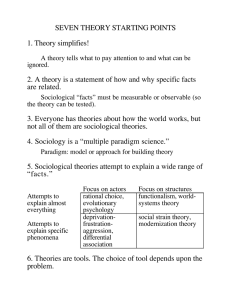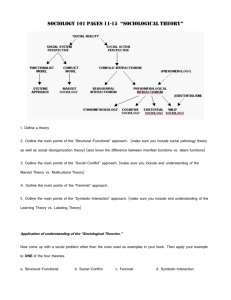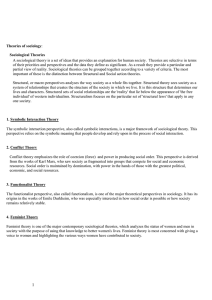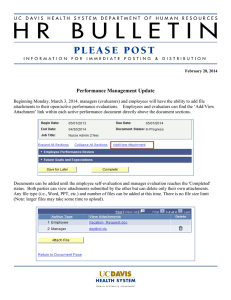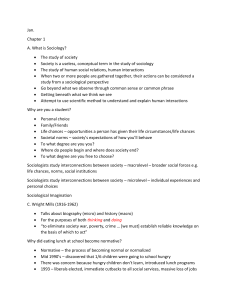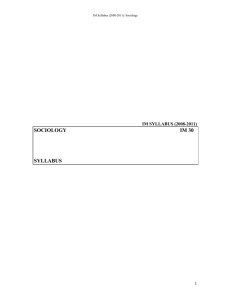Chapter 1, Groups and Relationships: A Sociological Sampler
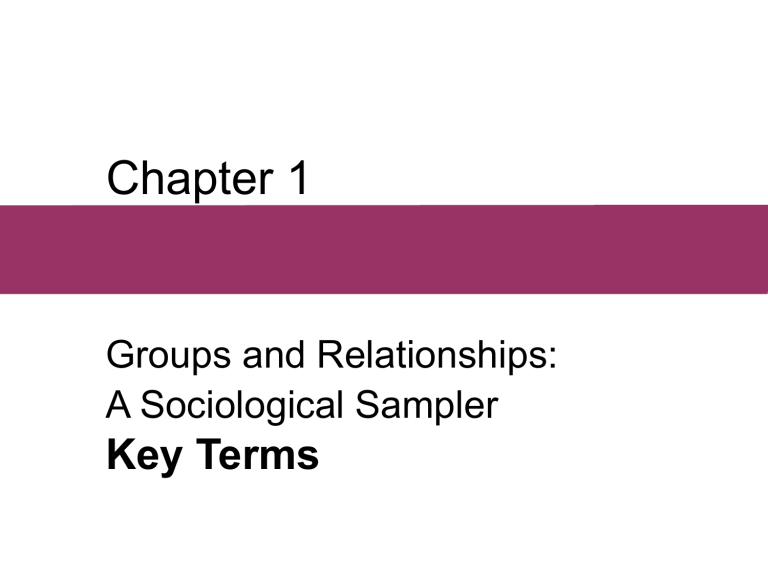
Chapter 1
Groups and Relationships:
A Sociological Sampler
Key Terms
Science
A method for describing and explaining why and how things work. It consists of two components: theory and research.
Social sciences
Those scientific fields devoted to the study of human behavior, including sociology, psychology, economics, political science, anthropology, criminology, and some branches of history.
Theory
An abstract statement that explains why and how certain things take place, whether these things be eclipses of the moon, chemical reactions, or outbursts of racism. In addition scientific theories must have empirical implications. That is, theories make definite predictions and prohibitions; they say some things will happen under certain circumstances and that other things will not happen.
Sociological imagination
A term coined by American sociologist C.
Wright Mills to describe the ability to see the link between incidents in the lives of individuals and large social forces.
Sociology
The scientific study of the patterns and processes of human social relations.
Units of analysis
The “things” on which a set of research observations are based. Sociologists use many different units of analysis; among them are individuals, small groups, large organizations, counties, cities, states, and nations.
Microsociology
The study of small groups and of face to face interaction among humans.
Macrosociology
The study of large groups and even of whole societies.
Concepts
Names used to identify some set or class of things that are said to be alike. Concepts are the building blocks of theories.
Group
Two or more persons who maintain a stable pattern of social relations over a significant period of time.
Aggregate
A collection of people lacking social relations; for example, pedestrians waiting for a walk light.
Primary groups
Groups whose members have close and intimate emotional attachments to one another.
Secondary groups
Groups whose members have only limited emotional attachments to one another.
Social solidarity
The density and emotional intensity of attachments within a group; put another way, the capacity of group members to generate a sort of glue that enables them to stick together, to “belong,” to be loyal.
Social conflict
Unfriendly interactions between groups, ranging from disagreements to violent encounters. For a conflict to be social, at least three people must be involved.
Network
A pattern of ties or connections among some set of units, as a computer network links many computers and a TV network links many local stations, allowing them to communicate and exchange.
Social network
A pattern of social relationships or links among some set of social units —usually people, but sometimes groups.
Social relationship
Repeated actions between social units, or the persistence of stable, shared features among units.
Unobtrusive measures
Techniques used to measure behavior without disturbing the behavior of the subjects.
Validation research
Studies conducted to determine whether particular measures used in research are accurate.
Operationalize
To select measures of concepts in order to make it possible to perform observational operations on them.
Hypothesis
A statement about the expected relationship between (or among) observable measures of concepts.
Free will
The philosophical and theological doctrine that humans possess the capacity for choosing among alternatives and, therefore, can be held responsible for the choices they make.

